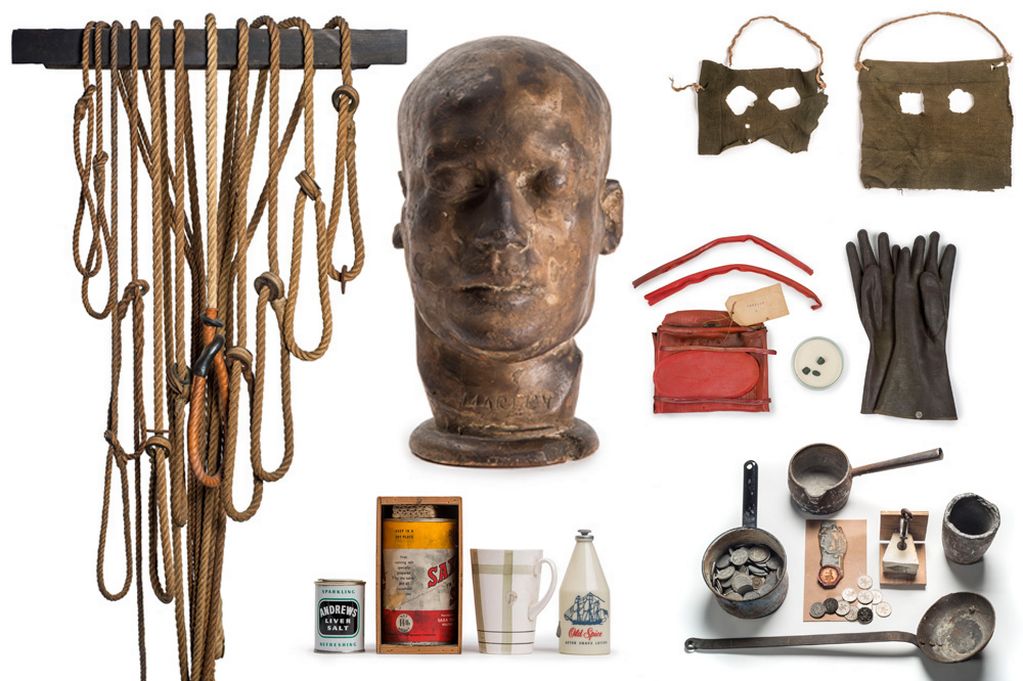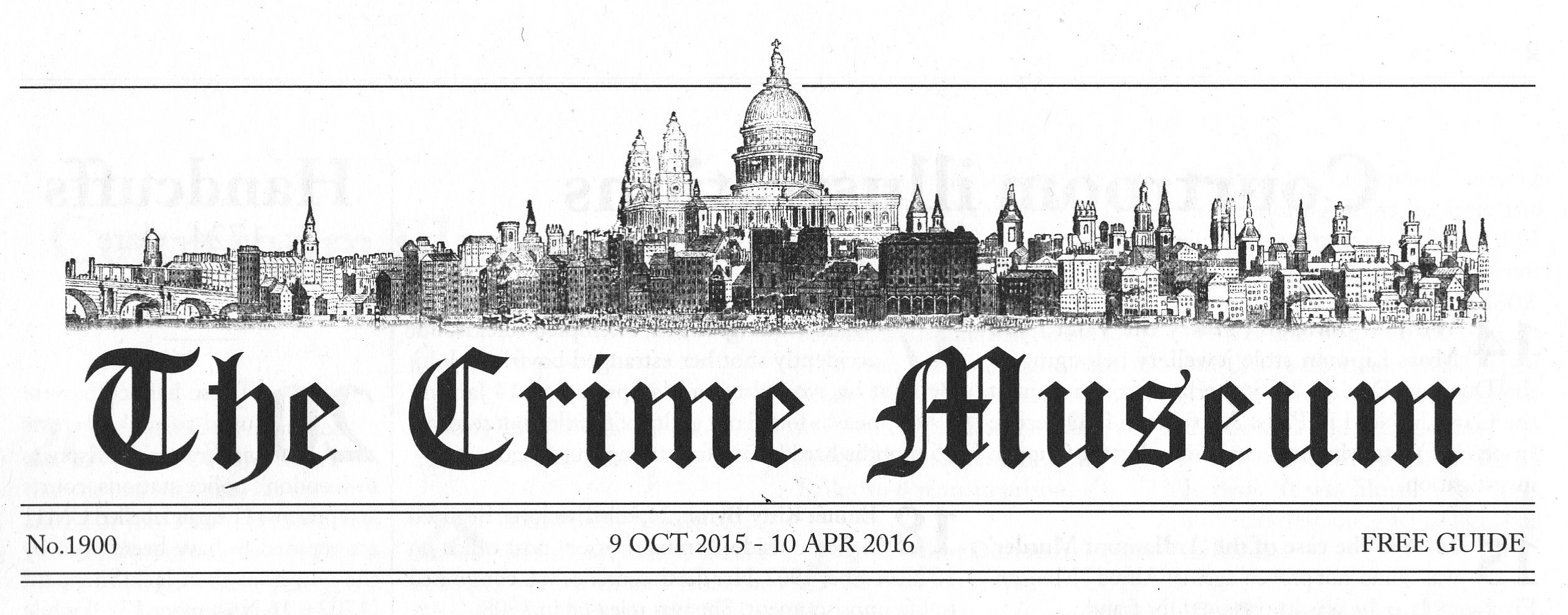The Crime Museum
The Crime Museum is a collection of objects and documents preserved by the police from crimes they have investigated. It used to be called the Police Museum and is based at New Scotland Yard. A selection of its contents forms the basis of an exhibition currently (until 10 April 2016) on display at the Museum
The Crime Museum is a collection of objects and documents preserved by the police from crimes they have investigated. It used to be called the Police Museum and is based at New Scotland Yard. A selection of its contents forms the basis of an exhibition currently (until 10 April 2016) on display at the Museum of London. Paul Magrath went to see it.
The Police Museum began, some time in the 1870s, from a collection of items of property belonging to convicted prisoners which the police had kept and which the prisoners or their families did not have the nerve or desire to reclaim. The police force itself had begun in the 1750s with the “Bow Street Runners” established by the magistrate (and novelist) Henry Fielding, but they were put on a more established footing under the Metropolitan Police Act 1829, with constables known as “bobbies” or “peelers” (for Sir Robert Peel, then Home Secretary). In 1842 the “Detective” branch was established, whose doughty representative you may have seen in the person of Inspector Bucket, played by Stephen Rea, in the BBC TV serial Dickensian.
Detection was initially hampered by lack of scientific knowledge, but rapid progress was made in the later decades of the century. Photography, ballistics and fingerprint evidence all played their part in increasing the police’s ability to track down murderers and other malcreants.
Early exhibits in the collection include a pistol used in an attempt on the life of the young Queen Victoria in 1840; a collection of handcuffs used in police work from the early 18th century; a folding ladder and various implements such as lock-picks used by Chalres Peace, a cat burglar who was also a talented violinist; and documents and contemporary reports and cartoons concerning the case of the Titchborne Claimant, Arthur Orton. There’s a collection of hangman’s ropes and paraphernalia. And there are lots of courtroom illustrations by William Hartley (1862-1937).
Forensic scientific firsts
The meat of the exhibition is a series of cases, mainly of murder, illustrating various “firsts” for police detection or case notoriety during the 20th century. These include
- the use of fingerprints in a murder case against Alfred and Albert Stratton in 1905;
- the use of wireless telegraphy in the case of Dr Crippen in 1910;
- the match of bloodstained fabric samples in the case of John Robinson, the “body in a trunk” murderer in 1927;
- the use of ballistics in the case of police-killers Browne and Kennedy in 1928;
- the use of soil analysis in the case of Leslie Stone in 1937;
- the use of dental analysis for a corpse burnt in a fire in the appropriately named case of Samuel Furnace in 1933;
- the use of psychological strategy to end a hostage siege situation in 1975.
For fame and grim notoriety, there are protective gloves and other paraphernalia used by John Haigh in disposing of murder victims’ bodies in an acid bath in the late 1940s; there is the pistol used by Ruth Ellis, the last woman to be hanged, in 1955; an portable generator used to electrocute torture victims by the Richardson gang; and a crossbow involved in the Kray twins’ case in the late 1960s. Alongside these mainly murder cases, there are more general exhibits relating to equipment used in spying, forgery, abortion, drugs and terrorism.
Image and actuality
There is often footage from news reports to lend a sense of immediacy, ranging from the earliest filming of a police siege in the Siege of Sidney Street (including footage of Winston Churchill looking busy as the Home Secretary of the day) in 1911, to the 7/7 bus and tube bombings of 2005.
Watching other visitors to the exhibition, I noticed an interesting phenomenon. Wherever there was a screen showing film or TV footage, a crowd would concentrate round it, mesmerised by the flickering image and ignoring the grim items and their captions in the adjoining exhibit. But for me, the objects in the vitrines were not just everyday or slightly unusual objects – knives, guns, rubber gloves, stocking masks or poisoner’s medicine box. They were imbued with the fact of their own authenticity, like religious relics, losing their generic character and becoming uniquely horrible in their association with a particular case. So I would divide the museum’s visitors between the screen-gawpers, for whom the medium was the message, and the tingle-spines like me, for whom it was the objects that were the message.
An educational collection
But in fact this was never the purpose of the collection. The original purpose of the Police Museum was primarily as an educational collection, used in the training of officers and for criminological research. Nevertheless, visitors were admitted from the earliest days. A visitors book has been kept since 1877.
Rather curiously, it appears that Frederick Seddon, a poisoner who in 1911 murdered his lodger with arsenic derived from flypaper soaked in water, had, some years before the crime forming one of the museum’s exhibits, visited the Police Museum with his father, as the visitors’ book records. The use of fly paper as a source of arsenic may have been the subject of an exhibit at the time of his visit – for example the case of Florence Maybrick (about whose guilt there remained considerable doubt). Her case does not form part of the current exhibition, but I would be surprised, given its notoriety in 1889, if there weren’t some grim mementos of it in the Met’s collection.

